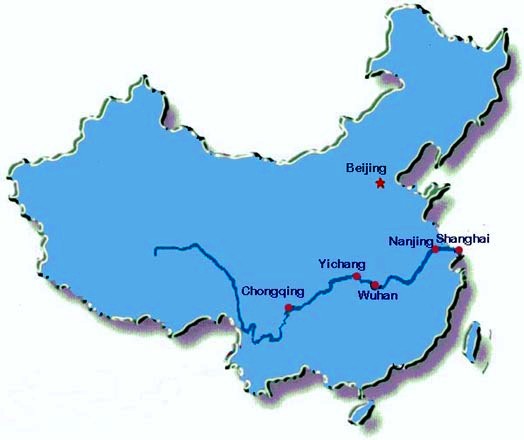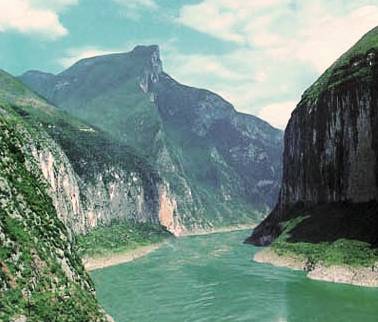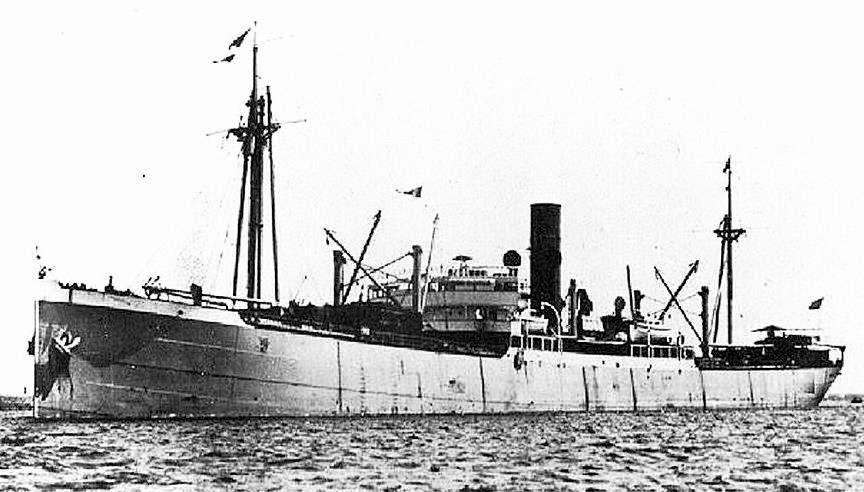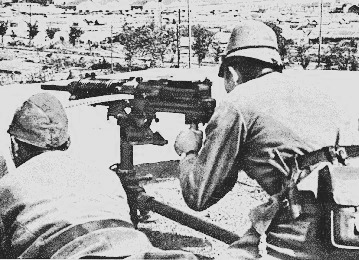RISING STORM - THE IMPERIAL JAPANESE NAVY AND
CHINA
1931-1941
 Location of Ichang (Yichang) on the Yangtze River
Location of Ichang (Yichang) on the Yangtze River
The Battle to Capture Ichang (Yichang) – 1940
© 2013 Bob Hackett and Sander Kingsepp
The port of Ichang (now Yichang) is in east-central China in SW Hubei province on the Chang Jiang (Yangtze) River. Located at the head of navigation below the entrance to the gorges of the Daba Mountain, it is the western terminus for large oceangoing vessels traveling up the Yangtze from Shanghai. From there goods are trans-shipped to smaller boats able to negotiate the Yangtze's rapids. Iching is also the gateway to Sichuan province. The Japanese refer to Ichang as Iching.
21 August 1876:
Iching is the second largest city in western Hubei province. Iching is opened to foreign trade as a trading port after Qing and Great Britain sign the Chefoo Convention. The Imperial government sets up a navigation company and builds wharfs.

 Location of Ichang near the Three Gorges Dam completed in 2012)
Location of Ichang near the Three Gorges Dam completed in 2012)
July 1937:
Japanese residents in the Yangtze River area are protected by Rear Admiral (later Vice Admiral) Tanimoto Umataro's (35)(former CO of CHOKAI) 11th Gunboat Division including river gunboat IJN TOBA based at Ichang.
 River Gunboat IJN TOBA
River Gunboat IJN TOBA
10 April 1940:
The Imperial General Headquarters issues the order to commence preparations for the capture of Iching. The main objective of the campaign (as outlined during the IGHQ conference presided over by the Emperor Hirohito (Showa) is to capture Iching and use it as a staging point for air strikes on Chungking to convince the Chinese government to surrender.
May 1940: The Iching Campaign
The Japanese seek a more rapid Chinese surrender. LtGen Sonobe Waichiro's 11th Army plans to move down the Yangtze to the relocated Chinese capital of Chungking (Chongqing), but first his forces must capture Iching. The 11th Army's forces also include the attached 7th and 13th Tank Regiments, 6th Field Heavy Artillery Brigade and an Engineer Regiment.
The IJAAF 3rd Air Wing (hikodan) and the IJNAF 2nd Second Combined Air Group provide air support. In all, the 11th Army has some 80,000 men committed, while the Chinese had 350,000.
Vice Admiral Tanimoto's First China Expeditionary Fleet's 11th Gunboat Division and part of the Shanghai Special Naval Landing Force (SNLF) also participate in the Iching campaign.
Iching was protected by Gen Li Zongren’s 5th War Area Army. Li Zongren became the acting President of the PRC in 1949-50.
1-4 May 1940:
The Japanese troops cross Tangbai River (a tributary of Han River). By 8 May, all troops have arrived at their assigned locations to launch a full-scale attack on the Chinese positions.
10 May 1940:
Five Chinese divisions led by C-in-C 33rd Army Group, Gen Zhang Zizhong, cross the Han River at Yicheng (a different place from Iching) in attempt to interrupt the Japanese preparations. Gen Zhang is KIA in battle at Mount Chang on 16 May, becoming the highest-ranking officer and the only Army group commander of the NRA to die in the war.
June 1940:
The Chinese dispatch a guerilla force to disrupt the Japanese rear areas. They also assign their River Defense Force to defend Ching-men (Jingmen), Sha-shih (Shashi) and Ichang.
8 June 1940:
MajGen Ikeda Naomi's 11th Infantry Brigade of the IJA 6th Division breaches the Chinese 26th Corps' defense line and captures Sha-shih and Jiangling (Jingzhou), then attacks Ichang along the Sha-shih-Ichang Highway.
10 June 1940:
The Japanese attack towards Iching that is defended by the Chinese 18th and 199th divisions of the 18th Corps.
 Japanese Type 92 Nambu Heavy Machine Gun Crew
Japanese Type 92 Nambu Heavy Machine Gun Crew
10-12 June 1940:
The 18th Corps defends Iching against three Japanese division and bombing raids.
12 June 1940:
At 1600, the Chinese retreat from their positions in and around Ichang.
16 June 1940:
Chinese forces launch a general offensive.
17 June 1940:
The Chinese recapture Iching for a short time.
18 June 1940:
The main Japanese force continues to mass in the area from Tang-yang (Dangyang) to the Hsiang River. The battle for Iching comes to an end and the the Japanese control Iching and Sha-shih (Shashi). Japanese casualities during the campaign are 1,403 men KIA and 4,639 men wounded. The Japanese claim 63,127 Chinese KIA and 4,797 Chinese captured. The capture of Iching marks the furthest westward advance by the Japanese.
3 September 1940:
The Japanese use Iching's small airstrip as a staging area for bombing raids over Chunking, only 240 miles away. The first Aichi D3A1 "Val" mission against Chungking is launched this day.
-Bob Hackett and Sander Kingsepp
Back to Rising Storm
Page









